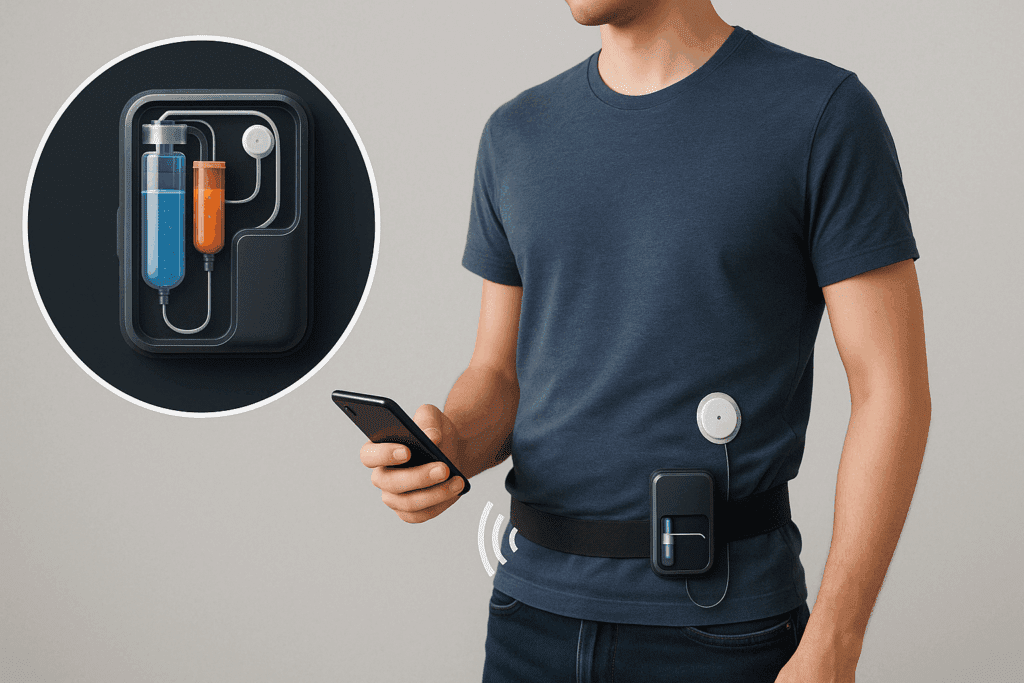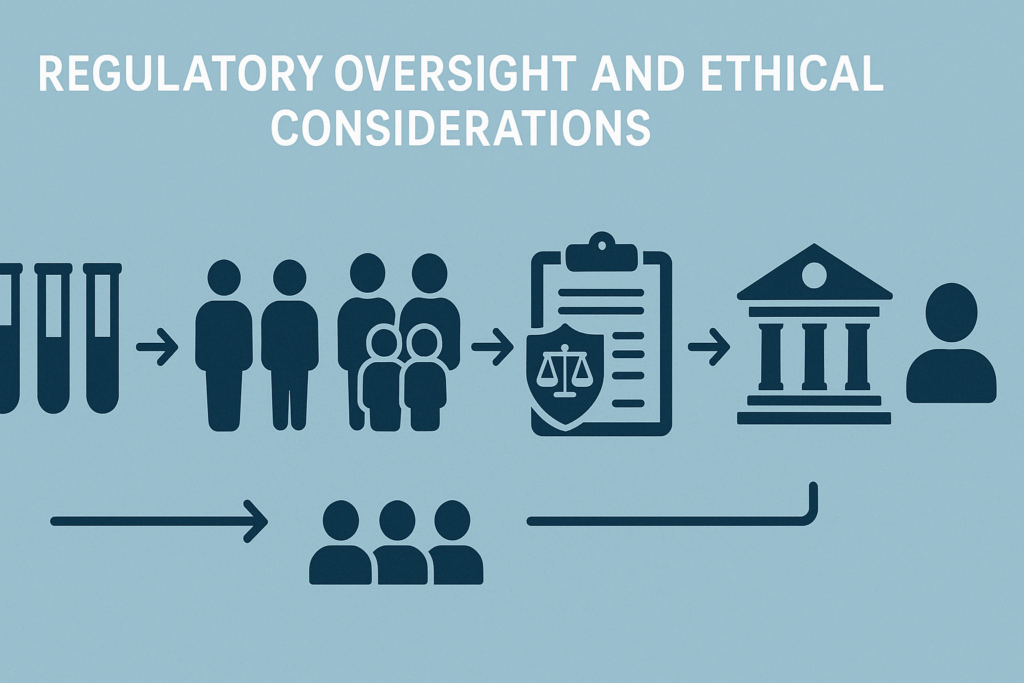Understanding the Urgency of Advancing Type One Diabetes Research
Type one diabetes is a chronic autoimmune condition in which the body’s immune system mistakenly attacks the insulin-producing beta cells in the pancreas. Unlike type 2 diabetes, which is often linked to lifestyle factors, type one diabetes is not preventable and typically manifests in childhood or adolescence. Its management requires lifelong insulin therapy, strict dietary monitoring, and consistent blood glucose testing. However, even with meticulous care, patients remain at risk for long-term complications. For this reason, the medical community continues to prioritize type one diabetes research to find more effective treatments and, ultimately, a cure.
You may also like: Breakthroughs in Current Diabetes Research: What the Latest Studies Reveal About Treatment and Prevention
In recent years, the pace of innovation in diabetes type 1 clinical trials has accelerated dramatically. Researchers are pushing the boundaries of what is possible by developing novel immunotherapies, advanced stem cell technologies, and next-generation insulin delivery systems. These scientific advances are not merely academic; they have profound implications for patients who live with the daily burden of this condition. Human trials for type 1 diabetes are increasingly showing promise, offering hope to individuals and families who have long awaited transformative breakthroughs. As public awareness grows and more funding becomes available, the landscape of type one diabetes clinical trials is evolving with unprecedented speed.

The Evolving Landscape of Clinical Trials for Type 1 Diabetes
The traditional model of diabetes clinical trials has been centered around testing new forms of insulin or refining glucose monitoring technologies. While these advancements remain crucial, the current wave of trials for type 1 diabetics is notably different in its ambition and scope. Today, researchers are investigating treatments that aim not just to manage symptoms but to halt or reverse the autoimmune process itself. This shift marks a pivotal transformation in the way we approach type one diabetes research.
Innovative therapies are now being explored through large-scale, multi-phase studies that often involve international collaboration. For instance, antigen-specific immunotherapies are being tested to retrain the immune system to tolerate beta cells rather than destroy them. At the same time, regenerative medicine trials are investigating the use of stem cells to regenerate functional insulin-producing cells in the pancreas. These studies underscore how far diabetes trials have come from their early days, transitioning from symptom management to potential disease-modifying therapies.
A notable hallmark of this shift is the increased participation of pharmaceutical companies, academic research centers, and biotech startups. Their involvement has added both financial and scientific momentum to type one diabetes trials, enabling faster recruitment, better data analytics, and enhanced regulatory pathways. As a result, patients now have access to a broader range of experimental therapies, some of which are already showing statistically significant results in early-phase trials.

The Role of Immunotherapy in Changing the Game
Among the most promising developments in type 1 diabetes research is the emergence of immunotherapy. In autoimmune diseases, immunotherapy aims to modulate the body’s immune response to reduce the attack on healthy tissues. In the case of type one diabetes, the goal is to prevent or delay the immune-mediated destruction of pancreatic beta cells. Several diabetes type 1 clinical trials have focused on monoclonal antibodies that target specific immune pathways known to be involved in the disease.
One such therapy, teplizumab, has shown remarkable potential in delaying the onset of type 1 diabetes in high-risk individuals. Approved by the FDA for this preventive application, teplizumab became a milestone in immunotherapy for autoimmune diseases. Human trials for type 1 diabetes involving this drug demonstrated that early intervention could preserve insulin production for a significant period. This development has inspired additional diabetes drug trials aimed at fine-tuning immune response with greater precision and fewer side effects.
While not all patients respond equally to immunotherapy, the results thus far suggest that it may be possible to significantly alter the disease trajectory in select populations. Researchers are currently working to identify genetic and immunological markers that predict response to such treatments. These efforts could lead to personalized therapies tailored to individual patient profiles. As we look ahead, immunotherapy will likely remain a cornerstone of diabetes clinical trials and a beacon of hope for those recently diagnosed.

Stem Cell Therapies and the Promise of Regeneration
Another frontier that is rapidly gaining ground is the field of stem cell therapy. The concept is both simple and profound: replace the destroyed insulin-producing beta cells with lab-grown cells derived from stem cells. Recent advancements have made it possible to generate beta-like cells that can be transplanted into the patient’s body, where they begin producing insulin in response to blood glucose levels. Several type one diabetes clinical trials have shown encouraging preliminary outcomes in this area.
In one landmark study, patients received encapsulated stem cell-derived beta cells without the need for lifelong immunosuppression. The results demonstrated improved glycemic control and, in some cases, reduced insulin requirements. These findings have sparked further diabetes trials, including phase II and III studies that aim to confirm safety, efficacy, and long-term viability. The scalability of this treatment is still a challenge, but progress continues as researchers refine cell production and delivery methods.
The implications of successful stem cell therapies are transformative. For many patients, this could mean fewer injections, greater independence, and a substantially reduced risk of complications such as neuropathy, retinopathy, and cardiovascular disease. Moreover, regenerative medicine aligns with the broader vision of curing, rather than merely managing, chronic diseases. As a result, stem cell-based diabetes type 1 clinical trials have attracted significant investment and attention from both the scientific community and patient advocacy groups.

Artificial Pancreas Systems and Digital Innovation
While immunotherapy and stem cells dominate headlines, another important area of progress is the development of artificial pancreas systems. These integrated devices combine continuous glucose monitoring with automated insulin delivery to mimic the function of a healthy pancreas. Unlike traditional insulin pumps, these systems can adjust insulin doses in real time based on glucose trends. This technological leap has been the focus of several recent diabetes drug trials, which evaluate both safety and usability.
Current systems, such as the iLet Bionic Pancreas, have been shown to reduce HbA1c levels while minimizing the risk of hypoglycemia. Many participants in these trials for type 1 diabetics report improved quality of life and a reduction in diabetes-related stress. Beyond glycemic control, these devices collect vast amounts of data that researchers can analyze to better understand disease patterns and treatment efficacy. This dual benefit — patient improvement and scientific insight — exemplifies the value of innovation in type one diabetes research.
In tandem with these systems, smartphone apps and wearable tech have also become integral to patient care. These tools not only help manage blood sugar but also foster a sense of empowerment and autonomy. Importantly, ongoing diabetes clinical trials are now incorporating these digital platforms to enhance patient engagement and adherence. As technology continues to advance, artificial pancreas systems will likely become more intuitive, accessible, and widely adopted.

Equity and Access in Clinical Trials
As we celebrate breakthroughs, it is vital to address the issue of access and equity in type one diabetes clinical trials. Despite the growing number of opportunities, participation remains uneven across demographic groups. Minority populations, individuals from low-income backgrounds, and those living in rural areas are significantly underrepresented in many diabetes type 1 clinical trials. This disparity not only limits the generalizability of findings but also deprives underserved communities of potentially life-changing treatments.
Efforts are underway to close these gaps. Some institutions are implementing community-based outreach programs to raise awareness about available trials. Others are offering travel stipends, virtual monitoring tools, and culturally sensitive communication strategies to encourage broader participation. Paid clinical trials for type 2 diabetes and other forms of compensation are also being explored to offset the logistical burdens many patients face.
Ensuring diverse representation in diabetes trials is not just a matter of fairness; it is a scientific necessity. Treatments may affect populations differently based on genetic, environmental, and lifestyle factors. By including a more representative sample of patients, researchers can identify these variations and adjust therapeutic approaches accordingly. As new studies are launched, equity must remain a central consideration in trial design and implementation.

Regulatory Oversight and Ethical Considerations
The rapid expansion of type one diabetes trials raises important questions about safety, transparency, and ethics. Regulatory bodies such as the FDA and EMA play a crucial role in overseeing these studies, ensuring that interventions meet rigorous standards before reaching the broader public. Institutional review boards (IRBs) evaluate study protocols to safeguard participants from undue risk and ensure informed consent processes are robust.
One ethical issue that has gained attention is the balance between innovation and safety. While the desire for breakthrough treatments is understandable, it is essential that new therapies are thoroughly vetted before widespread adoption. Diabetes drug trials, in particular, must consider long-term impacts on organ systems, immune function, and overall health. In this context, transparency in data reporting and patient outcomes is not optional but imperative.
Another concern relates to the use of placebos in clinical trials. While necessary for scientific validation, placebo use must be ethically justified, especially when effective treatments already exist. To address this, many diabetes clinical trials now use an “add-on” model where experimental treatments are given alongside standard care. This ensures that participants do not forgo essential medications while contributing to scientific discovery.
The Growing Role of Patients in Research Design
In recent years, there has been a paradigm shift toward greater patient involvement in the design and execution of clinical research. This movement, often referred to as patient-centered research, recognizes that individuals living with type one diabetes bring valuable insights into what outcomes matter most. By integrating patient voices into the development of trials for type 1 diabetics, researchers can create studies that are more relevant, practical, and humane.
Patients are increasingly serving on advisory boards, helping to shape trial protocols, consent forms, and recruitment strategies. This participatory approach has led to improved retention rates and more meaningful endpoints, such as quality of life metrics and daily functioning. It also fosters a greater sense of trust between patients and researchers, which is crucial for successful enrollment and data collection.
Organizations such as JDRF and the Diabetes Research Institute have been instrumental in championing this inclusive approach. Their advocacy has not only accelerated the pace of discovery but also democratized access to the scientific process. As more diabetes type 1 clinical trials adopt patient-centric models, the resulting treatments are likely to be more aligned with the lived experiences and real needs of those affected.
Frequently Asked Questions (FAQ) on Diabetes Diagnosis and Blood Sugar Monitoring
What are the most accurate methods for diagnosing diabetes today?
While traditional fasting glucose tests remain common, the gold standard in determining diabetes status now includes the hemoglobin A1C test. This blood test provides an average of your diabetes glucose levels over the past two to three months, offering a broader picture than a single fasting glucose reading. When considering how is diabetes diagnosed in modern clinical settings, physicians often rely on both the diabetes A1C and fasting plasma glucose (FPG) to confirm a diagnosis. Continuous glucose monitoring (CGM) is also being used for advanced screenings in high-risk individuals. To interpret a lab result properly, understanding the context—including lifestyle factors and coexisting conditions—is crucial for a reliable diabetes diagnosis.
How do doctors test for diabetes in people without symptoms?
For asymptomatic individuals, physicians use a combination of lab work and risk factor assessment to establish how to check for diabetes early. A fasting glucose test, followed by a diabetes A1C screening, is standard. However, doctors are increasingly using random plasma glucose tests and CGM for patients with risk factors such as obesity, hypertension, or a family history of diabetes mellitus. These tools help assess subtle patterns in diabetic blood sugar levels before symptoms manifest. Understanding how to test if you have diabetes proactively allows for earlier intervention and can potentially delay the progression to full-blown type 2 diabetes.
What do the different blood sugar readings for type 2 diabetes actually mean?
Understanding blood sugar readings for type 2 diabetes involves more than recognizing a number on a screen. The blood diabetes level at any given time depends on variables such as recent meals, stress levels, exercise, and medication. The threshold for type 2 diabetes blood sugar levels typically starts at 126 mg/dL or higher when fasting, or 200 mg/dL or more during a random glucose test. However, interpreting these values requires nuance; a one-time spike doesn’t always confirm diabetes. Long-term data such as diabetes A1C helps differentiate between temporary glucose fluctuations and chronic hyperglycemia.
How can someone monitor their blood sugar if they don’t yet have a diabetes diagnosis?
If you’re wondering how can I check for diabetes before being diagnosed, several options exist beyond clinical settings. Over-the-counter glucometers allow individuals to track their blood sugar values for diabetes risk awareness. People with a family history often monitor diabetes glucose levels after meals or during fasting windows to establish a baseline. CGM devices, while typically reserved for diagnosed diabetics, are now occasionally used in prediabetes studies to identify abnormal patterns. Understanding how to test if u have diabetes through at-home tools can empower individuals to seek earlier medical advice, particularly when readings hover near diagnostic thresholds.
What A1C is considered diabetic, and can it fluctuate over time?
When considering what A1C is considered diabetic, the consensus is a reading of 6.5% or higher. However, this value can fluctuate based on factors like illness, anemia, and medication adherence. Inconsistent sleep patterns and dietary changes also influence diabetes A1C levels over time. Thus, repeated testing is often needed to confirm a medical diagnosis of diabetes, rather than relying on a single measurement. Physicians may track diabetes blood sugar numbers over several months to observe trends, especially in patients on the borderline between prediabetes and full diagnosis.
How can I interpret my lab results more effectively if I suspect diabetes?
Interpreting lab results for diabetes mellitus involves understanding the interplay between various metrics. Beyond looking at fasting glucose, you’ll want to examine A1C, postprandial glucose, and even insulin resistance markers if available. Lab result interpretation for diabetes mellitus should also account for age, kidney function, and metabolic conditions. If your blood sugar readings for type 2 diabetes are slightly elevated but inconsistent, your physician may order a glucose tolerance test. Recognizing how to diagnose diabetes correctly means looking beyond individual numbers to the bigger metabolic picture.
What is a good blood sugar level for a diabetic throughout the day?
For diagnosed individuals, what is a good blood sugar level for a diabetic depends on timing. Generally, before meals, levels should range from 80 to 130 mg/dL. Post-meal values ideally stay below 180 mg/dL. However, individual targets may differ based on age, pregnancy status, and other comorbidities. Diabetes A1C goals usually aim for below 7% to reflect well-managed long-term control, even if occasional spikes occur in daily diabetes blood sugar numbers.
How do I know when to seek a diabetes test if I feel healthy?
Understanding how to test if you have diabetes when you’re symptom-free involves recognizing subtle risk factors. If you’re over 45, overweight, or have a sedentary lifestyle, it may be time for a test for diabetes 2, even without symptoms. Other indicators include frequent thirst, minor vision fluctuations, or slow wound healing. Many people ask how do you get tested for diabetes if they feel healthy—in such cases, a simple fasting glucose or diabetes A1C can be the first step. Staying proactive with routine diabetes test panels is essential, especially if blood sugar values for diabetes fall into prediabetic ranges.
What sugar level is diabetic, and does it change with age or other conditions?
Defining what sugar level is diabetic can be complex because glucose thresholds may shift depending on age and health status. In general, a fasting glucose of 126 mg/dL or higher or a random glucose of 200 mg/dL meets the criteria. However, for older adults, slightly elevated diabetes glucose levels may be tolerated due to comorbidities and frailty considerations. Additionally, medications such as corticosteroids can temporarily spike diabetic blood sugar levels. This is why how doctors test for diabetes often involves repeating tests to confirm patterns, not just isolated spikes.
Can lifestyle changes alone improve diabetes blood sugar numbers before diagnosis?
Absolutely, lifestyle interventions can significantly impact diabetes blood sugar numbers even before a formal diagnosis. Regular physical activity, dietary changes, and weight loss can reduce insulin resistance and improve blood sugar values for diabetes. In fact, many physicians use a “watchful waiting” approach for those at risk, advising home monitoring alongside intermittent lab work. When learning how to check for diabetes without medications, consistent data collection becomes crucial. Understanding your type 2 diabetes glucose levels in response to different habits allows for targeted interventions that can sometimes delay or even prevent a full diabetes diagnosis.
Conclusion: Why These Breakthroughs in Diabetes Trials Matter Now More Than Ever
The momentum in type one diabetes research is not merely encouraging; it is transformative. From immunotherapy and stem cell regeneration to artificial pancreas systems and digital health tools, the breakthroughs emerging from current diabetes type 1 clinical trials signal a fundamental shift in how we understand and treat this complex disease. These innovations are not theoretical. They are grounded in rigorous science, made possible by human trials for type 1 diabetes that are reshaping clinical expectations and offering real, measurable hope.
What sets this moment apart is the convergence of medical innovation, technological advancement, and patient advocacy. With each new diabetes study, we move closer to not just better management, but the potential for long-term remission and even prevention. Type one diabetes research is no longer confined to academic journals or laboratories; it is now actively reshaping the lives of those it aims to serve.
However, challenges remain. Equity in access, ethical oversight, and the need for sustained funding and public engagement must all be addressed to ensure that these breakthroughs benefit everyone. Paid diabetes studies and more inclusive recruitment strategies can help bridge gaps in participation, while transparent communication builds trust and accelerates adoption.
As we look to the future, it is clear that the landscape of diabetes drug trials and clinical innovation will continue to evolve. For patients, these developments are not just newsworthy; they are life-altering. With continued investment, collaboration, and commitment, the promise of these type one diabetes trials may soon become the reality that changes everything.
Was this article helpful? Don’t let it stop with you. Share it right now with someone who needs to see it—whether it’s a friend, a colleague, or your whole network. And if staying ahead on this topic matters to you, subscribe to this publication for the most up-to-date information. You’ll get the latest insights delivered straight to you—no searching, no missing out.
Further Reading:
Emerging Concepts and Success Stories in Type 1 Diabetes Research: A Road Map for a Bright Future
Innovative immunotherapies and emerging treatments in type 1 diabetes management
The future of diabetes treatment: Is a cure possible?
Disclaimer
The information contained in this article is provided for general informational purposes only and is not intended to serve as medical, legal, or professional advice. While MedNewsPedia strives to present accurate, up-to-date, and reliable content, no warranty or guarantee, expressed or implied, is made regarding the completeness, accuracy, or adequacy of the information provided. Readers are strongly advised to seek the guidance of a qualified healthcare provider or other relevant professionals before acting on any information contained in this article. MedNewsPedia, its authors, editors, and contributors expressly disclaim any liability for any damages, losses, or consequences arising directly or indirectly from the use, interpretation, or reliance on any information presented herein. The views and opinions expressed in this article are those of the author(s) and do not necessarily reflect the official policies or positions of MedNewsPedia.


